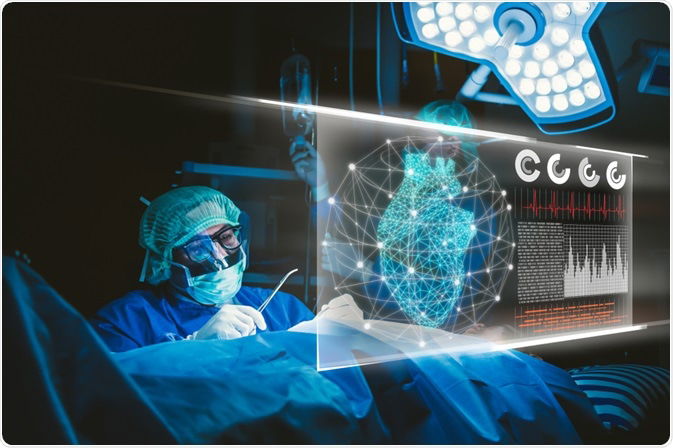
BY CONCANNON XR
When the COVID-19 pandemic hit, it forced healthcare systems to redefine practices and adopt new strategies for delivering quality care. The outcome was the implementation of virtual care and telehealth solutions – which are poised to continue their upward growth long after the crisis has passed.
CDC research shows the use of telehealth has increased over 150% since pre-pandemic times. Also, most telehealth visits during the study period in 2020 were not related to COVID at all, showing increased comfort with telehealth services for both patients and physicians..
Head-Mounted Devices or Head-Mounted Tablets (HMTs), like our preferred Realwear HMT-1, are at the forefront of emerging technologies within the virtual space and are slated to improve the efficacy of the healthcare system. From medical training to clinical care, Realwear’s HMT-1 units provide the convenience of hands-free operation and hold the promise of providing safer, more effective care.
Streamline Proctoring Needs
A delay in care not only hinders patient safety, but it can negatively impact a healthcare facility’s bottom line due to poor satisfaction rates and increased patient turnover.
Oftentimes, delays are the result of unavailable local clinical proctors. When a situation arises that requires their expertise, it may result in additional costs to bridge staffing gaps or cover traveling for proctors outside the area.
With devices like the Realwear HMT-1, telehealth visits can be performed from any location. The technology allows for first-hand observation using real-time recording from the provider’s perspective. In turn, hospitals and healthcare facilities can effectively decrease their need for on-site physicians and minimize delays in patient care.
Improve Rounding & Enhance Knowledge Sharing
Because the healthcare landscape is forever evolving, medical professionals face the challenge of having to constantly acquire new knowledge and skills. Healthcare workers must keep abreast of new medicine, procedures, technology and even changing regulations in order to deliver care at an optimal level. This requires the exchange of information through a variety of communication vehicles, including from fellow peers.
Many HMTs now offer an asynchronous (or “store and forward”) recording feature – allowing for the swift and efficient dissemination of new information, such as surgical techniques. This real-time streaming capability can also be valuable in situations where a nurse or practitioner needs the aid of an off-site specialist to deliver timely and accurate care.
Quick & Safe Thermal Imaging
Traditional temperature-taking techniques not only require body contact, but they can take up to 3 minutes to complete. In crowded hospitals or during times where infection is running rampant (like with COVID-19), these techniques can jeopardize patient and practitioner safety. HMTs can tackle this challenge. For example, Realwear’s HMT-1 headset provides hands-free infrared thermography, helping medical personnel screen for abnormal body temperatures. The mobility of the technology allows for information access and exchange via voice commands – ensuring infected individuals remain separated from healthy ones.
From pre-hospital care to the operating room itself, using a telemedicine solution on HMTs can mean the difference between life and death. The ability to communicate with others via video can put an extra set of eyes on a patient if needed. What’s more, it opens the doorway for seamless collaboration and knowledge exchange without needing all parties to be physically present on-site.
As the telehealth field continues to expand, physicians can utilize head-mounted devices like Realwear’s HMT-1 to vastly improve the patient experience and outcomes. To learn more about how your medical practice can leverage this technology, contact our experts today.


